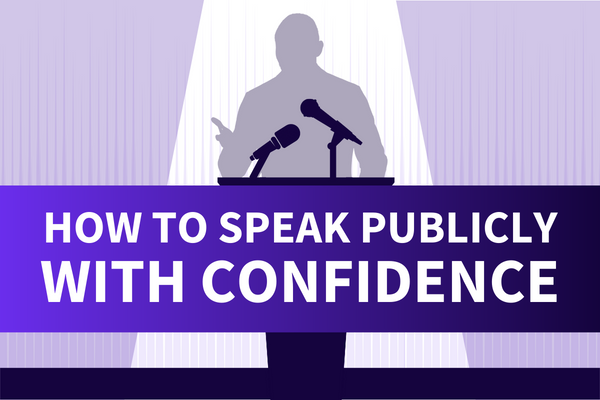A thought leader is someone who uses their industry experience and perspective to innovate and influence others in their space. With the rise of the internet, it seems like everyone is a so-called thought leader. Still, few actually have the credentials and leadership skills to back it up. While it might seem like everyone you stumble upon while browsing LinkedIn or Twitter is a thought leader, this is a term that has to be earned.
In reality, you can’t purchase status as a thought leader. It’s not something that’s bestowed upon you by your Twitter bio either. If you want to establish yourself as a thought leader in your industry, you need a strong presence, awareness, and brand. Because it’s so elusive to understand the real-world steps behind what it really takes to be a thought leader, this is something many professionals strive for years to achieve.
While a thought leader can come from anywhere, not anyone can be a thought leader. A true thought leader goes beyond the corporate buzzword nonsense to lead through value and expertise. Most importantly, they earn their trust from their audience. In this day and age, trust is its own form of currency. With a reported 58% of decision-makers saying they choose a business based on thought leadership, this can’t be understated.
When you position yourself as an expert (and have the skills to back it up), people take notice. However, there is no magic formula that transforms you into a leader overnight. Unlike Cinderella, there are fairy godmothers here, and you’ll have to create your own glass slippers. In this guide, we’ll uncover the cold, hard truth about what it really takes to become a thought leader.
What is a thought leader?
To begin, let’s define what a thought leader is in practice. While you’ve likely encountered this term endlessly on social media, how often have you considered the meaning behind it? You can find countless definitions online with a quick search, but Denise Brosseau of Thought Leadership Lab says it best. Simply put, “Thought leaders are the informed opinion leaders and the go-to people in their field of expertise.”
In other words, they’re trusted sources. Throughout their career, they’ve built an audience of friends, colleagues, influencers, and followers who believe their ideas are worthwhile. More importantly, they encourage change through their ideas. They often challenge the status quo, and they encourage others to take action of their own.
While thought leaders come from any background or community, not anyone can be a thought leader. This is something that takes time (often years), knowledge, industry experience, and networking skills. If you already have a well-known product, service, or software, it’s easier to become a thought leader than if you’re starting from ground zero.
However, the most important quality of a thought leader is the willingness to do the work. There are no shortcuts to thought leadership. You need a strong foundation, a willingness to learn, and a wide network.
What are the benefits of becoming a thought leader?
Next, what are the benefits of becoming a thought leader? Why should you even consider this avenue in the first place? There are a lot of reasons to seek this type of expertise and admiration. Here are some of the most common benefits and why they matter:

- Accomplishment: First and most well-known, thought leaders are accomplished. To be idolized in your space is an achievement, and it’s something to celebrate.
- Visibility: Beyond achievement, visibility can be strategic. When you have a larger audience, you have more opportunities to sell your expertise, products/services, and speaking skills.
- Revenue: With greater visibility comes more revenue. Thought leaders tend to be higher earners in their space.
- Access: Thought leaders also have access to greater resources, opportunities, tools, and professionals. For example, you might have access to media sponsorships, researchers, or community leaders that take your projects further.
- Clout: People trust other people. When you have a higher profile in your space, people take your recommendations seriously. In fact, 63% of consumers trust influencer messages more than brand messages.
- Competition: There has never been more industry competition than ever before. Thought leadership is a way to get a competitive advantage over others in your space. If you want to earn client attention, you need this kind of recognition.
- Impact: Lastly, thought leaders also have a greater impact on a larger scale. They can bring meaningful, lasting change to any industry.
While being a thought leader is undeniably exciting, that doesn’t mean it isn’t without its risks. Being in the spotlight is a big responsibility. You’re more likely to be the target of scrutiny, and you have to own up to mistakes when they happen. It’s important to recognize the real balance in thought leadership between strengths and weaknesses.
What does it take to become a thought leader?
Now that you know what a thought leader is and why it’s beneficial, what does it take to get started? As we’ve explained before, this isn’t something that happens overnight.
It takes time, dedication, and expertise. It also takes skill when speaking, selling yourself, and seeking new opportunities. Here are the things every thought leader needs to be successful.
Dedication To Your Target Audience
First and foremost, you need to be dedicated to your target audience. Thought leaders don’t market to everyone. They understand that they need a targeted, specific audience if they want to make an impact. One way to think of this is as defining your area of expertise. You can’t be an expert at everything. What’s something you can do well to stand out to a specific group?
Consider areas of your industry where you already shine. This could be customer service, software innovation, or even team collaboration. There is no such thing as one-size-fits-all. From there, consider how you can hone this expertise into a message that relates to a specific audience. It’s always better to dive deep into a few topic areas than to spread yourself too thin.
For example, look at Susan Cain, the revolutionary behind Quiet Power: The Secret Strengths of Introverts. Known for giving one of the most well-known TED talks of all time, Cain has a clear audience: introverts. Though the business world seems created around extroverts, Cain’s research into this specific area of business psychology uncovers the real strengths these professionals bring to the table.
She very likely could have written about business psychology in general, but this wouldn’t have been nearly as memorable. It’s clear through Cain’s work that she is dedicated and passionate about introverts. As an introvert herself, she brings her personal experience to life to lead others towards success.
Consistent & High-Quality Content
Next, thought leaders also know how to create consistent and high-quality content. It’s not enough to post and ghost. You have to create content your audience wants to consume on a regular basis. Content comes in all shapes and sizes, including:

- Blog posts
- Social media posts
- Images and infographics
- Podcasts
- Videos
- Webinars
- Email newsletters
- Research
There are so many ways to interact with your audience, but you have to stay active. Creating something new and then abandoning your audience in cyberspace won’t get you far. Quality content speaks for itself, and it highlights your expertise for you. In other words, show don’t tell. For instance, you can explain how you’re a great marketer all day long, but this doesn’t mean much. Instead, a weekly marketing insights newsletter would go much further.
High-quality content doesn’t just mean visually appealing and well-branded (though these things are important). It means providing real value. It’s not enough to throw together 500 words and click publish on a blog. While this is a good first step, you need to make sure your content provides real value to your audience. Value can be inspirational, educational, or entertaining. Before publishing new content, ask yourself what benefit it has for your audience.
To see amazing content in action, look at Claire Pelletreau. As an expert in Facebook ads and course marketing, she knows what it means to attract an audience through content. Though her primary goal is to sell her training courses, she shares high-quality, free content on her blog regularly. This brings her target audience to her directly while showing that she knows her stuff. When you give away high-value content for free, this acts as a lead for greater conversions.
Optimized Marketing Channels
Additionally, today’s best thought leaders have optimized marketing channels. It’s never been more important to have a strong strategy for collecting leads, providing a high-quality experience, and learning as you go. It’s not enough to simply market on multiple platforms and hope for the best. You need a clear, optimized strategy.
Because most professionals today use multiple channels to market their brands (email, social media, sales ads, etc), you need to collect data as you go. If you’re not collecting analytics, you might be wasting time and money on things that aren’t benefiting your business. From there, you can refine your marketing process and identify opportunities to automate or outsource. Thought leaders know how to work smarter not harder.
Don’t be afraid to use some of the best tools on the market to streamline your process. Content management tools like social media schedulers and powerful CRMs give you more control over your time and business. If you’re shuffling through endless spreadsheets and apps, it’s time to discover what you really need to optimize your marketing channels.
Economist Tim Harford knows the power of streamlining his marketing channels. You can see this come to life on his website. Though he primarily sells his books and speaking engagements, he optimizes all marketing channels (podcasts, guest posts, blogs, etc) to drive traffic to his website. Through clear landing pages and calls to action, new audience members know exactly how to interact with his content.
Collaboration With Established Experts
Another important aspect of thought leadership is collaboration. You can’t exist in a vacuum. If you want to be a successful thought leader, you need to collaborate with established experts. Not only does this boost your own trustworthiness, but it’s also an opportunity to widen your reach.

The blunt truth is that thought leaders aren’t necessarily smarter than average, run-of-the-mill experts. It’s who they know (not what they know) that makes them stand out. When you know the right people and have the right platform, this is what makes you a thought leader. As the saying goes, it’s not what you know—it’s who you know. That means your network is an essential piece of the puzzle.
How can you collaborate with established experts? Thanks to the rise of digital media, it’s never been easier. No matter how small, each opportunity brings you closer to other industry leaders. Here are some of the best ideas:
- Be a guest on a podcast
- Participate in industry groups
- Attend a networking event
- Work with influencers
- Guest post on leading blogs
- Collaborate on a video
- Connect with local business owners
- Partner with businesses
- Support a research project
One of the best-known authors and speakers in the sales space is Bob Burg. He used collaboration with established experts as a way to skyrocket his audience, and this is still his go-to strategy today. His podcast “The Go-Giver Podcast” features leading experts from across the world of business and selling. Though it sounds simple, it’s effective.
With over 180 episodes, Burg has talked to more than his fair share of industry experts. By talking to those making an impact, he creates a network of influencers to speak for his success. Better yet, he creates an outstanding podcast that attracts a wider audience.
A “Service Before Sales” Mindset
Last but not least, thought leaders understand the power of “service before sales.” This is a mindset that sets apart passive promoters from real-world thought leaders. Though we often think of sales as a skill set, it’s actually based on a very human emotion: empathy.
When you approach sales interactions from a service perspective, you focus on the why. Not only do you understand why your expertise is valuable, but you truly care about your audience. You want to see them succeed. Thought leaders don’t force a sale. They’re the opposite of those scummy car salesmen who pressure you to make a purchase. Instead, they want to really help their customers.
Are you using a service before sales mindset?
- Understanding: Each action starts with understanding. You know your audience and what they want. Better yet, you know how you’re equipped to solve their problems.
- Define their needs: Instead of insisting you know best, you take the time to define the needs of your audience. What are their concerns? Thought leaders ask targeted questions to make sure they’re actively listening.
- Build trust: Happy customers lead to more sales. That means you build trust by working in your audiences’ best interest, even if that means recommending them to a better-fit provider. Again, it’s about working in service to others.
- Learn: Lastly, thought leaders are always learning. They understand that failure is a real part of success. If you lose a sale or opportunity, it’s just a chance to do better in the future.
Dr. Margie Warrell is a shining example of a thought leader who places service before sales. Though she’s undoubtedly an outstanding saleswoman, she is so successful because she truly cares about what she does. This keynote speaker and author has a passion for personal development, and she understands how harmful it can be to let fear get in the way.
Though her paid work has a wide reach, so do her initiatives to help women across the globe. She works through the UN Global Initiative to mentor women entrepreneurs in developing countries, and she advocates for women in business at all levels. By continuing to lead with kindness, compassion, and service, she sets herself apart.
Conclusion
Ultimately, thought leadership goes beyond buzzwords. A thought leader in today’s world is someone who leads with expertise, passion, and a strong network. While these leaders come from anywhere, it takes real work and perseverance to become established as an expert in any space. It’s not enough to add “guru” to your Twitter bio. You need to have a strong foundation and content to lead the way.
With this in mind, you now know the 5 things it takes to really be a thought leader. Notice how none of these factors relate to age, gender, education, or experience. Anyone truly can become a thought leader, but that doesn’t mean everyone will. Whether you hope to get paid to speak or build your brand, it takes real work to create real change.






